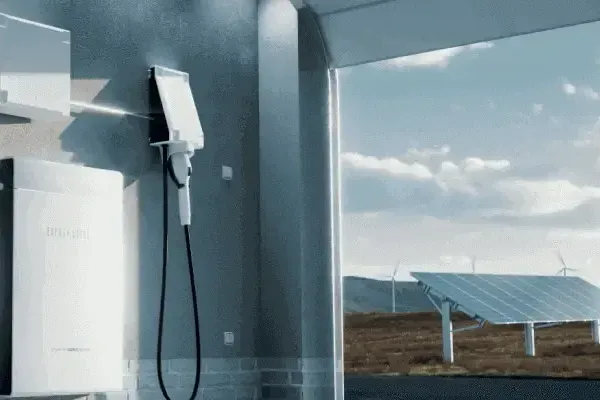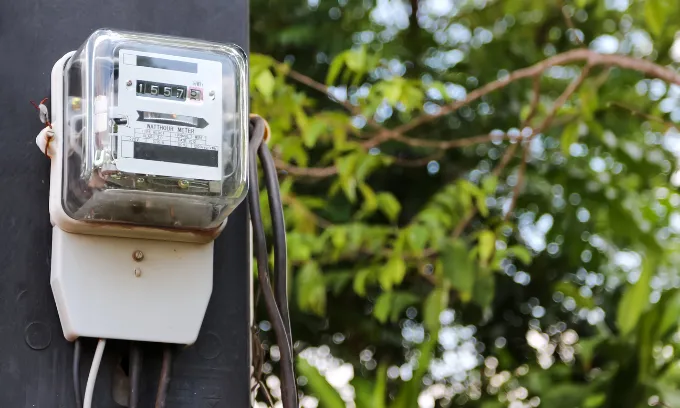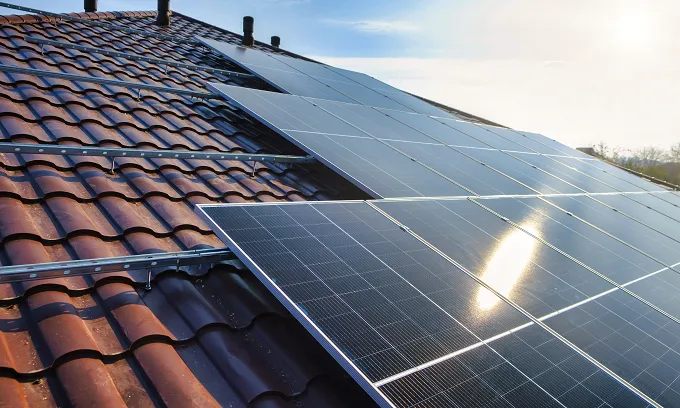How energy in Tasmania works
Tasmania’s energy market features two sources of energy - electricity and gas.
For both, you need to choose a retail provider and plan. These providers purchase bulk energy from the wholesale market and resell it to customers like you through ‘plans’. Plans outline exactly how you will be charged for your energy usage.
While they sell you energy, providers do not supply this to your home or business. That is the job of the distributor. Distributors are responsible for maintaining the poles, pipes and meters that transport energy around the country.
Both electricity and gas markets are regulated for pricing and deregulated for competition. This means that the Australian Energy Regulator (AER) allows providers to join the markets, but prices must be approved.
Why compare energy in Tasmania?
Comparing energy plans costs nothing and can save you hundreds of dollars if you haven’t shopped around recently.
Electricity in Tasmania
TAS only has one distributor for electricity, covering all regions.
Electricity distributors | Providers | Region in |
|---|---|---|
TasNetworks | Aurora Energy | All |
1st Energy | ||
CovaU | ||
EnergyLocals | ||
Solstice Energy |
Electricity plans in Tasmania
The Tasmanian electricity market features two types of plans - ‘market offers’ and ‘standing offers’. Providers will charge you for your electricity usage in kilowatt hours (kWh). Both types of plans use an estimated annual usage, which is set by the Tasmanian Economic Regulator (TER).
Your bill will likely differ slightly from the estimate given by your provider.
Standing offers
Standing offers are plans that often feature the maximum amount a provider can charge. This price is regulated by the AER every year to protect customers from paying more than they need to for electricity.
They also serve as a benchmark for comparing offers to ensure you are getting the best value plan.
Currently, Aurora Energy is the only provider required to list a standing offer in Tasmania as it is government owned.
You may find that other providers still choose to offer a standing contract plan as a reference point for their market offers.
Market offers
Market offers are more competitive offers set by providers to compete against one another for customers. These plans can feature cheaper rates, discounts or incentives.
The plans are usually for a set period of time, a benefit period or contract length. Any rates and discounts will likely change once your benefit period is up. Most providers in Tasmania only provide market offers.
Most market offers are variable rate plans, meaning providers can increase their rates before they expire. A fixed rate plan freezes rates during the length of its contract, but they are rare in Tasmania.
Market offers can be:
- Conditional discounts: Apply if specific conditions are met (e.g. pay on time discounts). Providers may include them in the advertised price of a plan, which can be misleading. If you don’t meet the criteria, you won’t get the discount.
- Dual fuel discount: You may be eligible if you bundle electricity and gas plans from the same provider. Keep in mind this doesn’t guarantee the cheapest price for both. However, dual fuel discounts are not common in Tasmania.
- Guaranteed discounts: Applies to all without conditions and is usually shown as a percentage off a plan’s advertised price and is active for your contract length.
- Reward programs: Some plans offer free access to reward programs, giving you points for every dollar spent on power bills that can be exchanged for rewards (i.e. movie tickets) through the program.
These features can be found on a plan’s energy fact sheet, also known as the Basic Plan Information Document (BPID). On the results page of Canstar’s comparison page, you can access a plan’s BPID by clicking on the ‘Basic Plan Information’ prompt.
Electricity prices and rates in Tasmania
On your electricity bill, you will see two charges - “usage rates” and “supply rates”.
- Daily supply charges: Charged in c/day, these ensure your house or business stays connected to the grid.
- Usage charges: This cost, charged in c/kWh, is a variable amount for how much electricity you use.
The usage rates make up the Tasmanian electricity tariff structures. Tariffs are pricing models providers use to set a plan’s usage charges (in c/kWh). Different rates apply to different tariffs.
Tasmanian energy pricing uses tariffs differently from most other states.
The table below explains the different tariff types customers in Tasmania can expect to see on their energy bill.
Available tariffs
Tariff | What does this mean? |
|---|---|
Tariff 93 | Tariff 93 is a time of use tariff available to households with smart meters. |
Tariff 62 | Tariff 62 is the night-time only controlled load tariff for high consumption |
Obsolete tariffs
Tariff | What does this mean? |
|---|---|
Tariff 31 | Tariff 31 is a flat rate tariff that makes up the energy charges for light and Tariff 93 is used in place of Tariff 31. |
Tariff 41* | Tariff 41 is a flat rate tariff that covers the energy charges for heating your |
Tariff 61* | Tariff 61 is a controlled load off-peak tariff with an afternoon boost and |
*For more eligibility information, visit the Tasmanian Government’s official website.
How to find the best Tasmanian energy plan
There are other factors to consider beyond just choosing the cheapest market offer.
How much electricity you use
If an electricity plan has higher supply charges, expect lower usage charges, and vice versa. Getting clear on your energy usage will help you decide which type of plan is cheaper for you:
When you use the most electricity
Documenting the hours you use the most electricity (e.g. the hours you’re at home) will help guide you towards which tariffs you should choose:
- If you use more electricity during peak hours, a single rate tariff will be cheaper than a ToU tariff.
- If you use less electricity during peak hours, a ToU, demand or flexible tariff will be cheaper than a single rate tariff.
- If you have a power-intensive appliance (e.g. pool pump), a CL tariff can save you more money if you’re willing to shorten its operating hours.
Be wary of hidden fees
You don’t want to be left paying more than you should.
Discount conditions
Some providers include conditional discounts in their estimated cost, making these plans appear much cheaper than other plans on offer. These discounts can offer great value, however, it is important to make sure you can meet the conditions.
Look at the plan’s fact sheet to check if a discount outweighs higher supply and usage rates.
Some discount conditions may include:
- Pay on time: Customers can be eligible for this discount if they consistently pay their bills on time.
- Direct debit: Some plans offer discounts for customers who sign up for direct debit payments. To keep your discount, stay aware of your billing dates and check your account beforehand to make sure you have enough funds to keep your arrangement active.
- Memberships: Members of automobile clubs (such as RACT), or reward programs can receive discounts on some plans.
Gas in Tasmania explained
Gas distributors and providers
In Tasmania, all natural gas transmissions are operated by one distributor: Tas Gas Networks. The gas market is much smaller than elsewhere in Australia.
This is mostly because TAS actually receives its gas from Victoria (VIC). The Tasmanian Gas Pipeline (TPG) transports gas from VIC throughout TAS via a sub-sea pipeline.
Tasmanian gas plans and pricing
Following the introduction of Full Retail Competition, Tasmanians can choose from two natural gas retailers in Tasmania, Solstice Energy and Aurora Energy.
Both have two charges for gas — “supply charges” and “usage charges”. You will see both on your gas bill. Unlike electricity, which is measured in kWh, gas usage is measured in megajoules (MJ).
- Daily supply charges: This flat rate charge ensures you continue to have access to the gas supply and is charged in c/day.
- Usage charges: This is a variable rate (charged in c/MJ) that reflects your household gas usage.
Aurora Energy gas rates
Customer type | Daily supply | Usage charge |
|---|---|---|
Residential | 77.37c/day | 5.7285c/MJ |
Prices as of September 2025. Visit Aurora Energy for more details.
Solstice Energy gas rates
Customer type | Daily supply | Usage charge |
|---|---|---|
Residential | 77.40c/day | 5.193c/MJ |
Prices as of September 2025. Visit Solstice Energy for more details.
How to find the best gas plan in Tasmania
Both retailers supply gas to the full range of customers, including residential, business and industrial.
While there are no published discounts, plans will still advertise different usage and supply charges. Ultimately, your decision will come down to price, the quality of service and personal preference.
Solar in Tasmania explained
Over 44,000 homes and businesses in Tasmania currently have solar systems installed.
Unlike electricity or gas, you don’t pay for a plan that supplies your home with solar power. Instead, your electricity provider pays you indirectly for your excess solar (a feed-in-tariff). Here’s how it works.
Solar feed-in tariffs in Tasmania
In Tasmania, retailers are required to pay customers with a solar system a credit for exporting excess solar. This is known as a solar feed-in tariff (FiT).
Unlike most Australian states, there is a minimum FiT that retailers must adhere to for customers with solar systems. Retailers are required to have a minimum solar FiT of 8.78c/kWh.
How to find the best Tasmanian solar feed-in tariff (FiT)
Picking the highest solar FiT is not always the best option - other considerations include:
- The usage and supply charges — if they’re high, you may end up paying more than you’re credited from your FiT.
- Some solar FiTs offer higher rates for a capped amount of exported solar before decreasing to a lower rate each day (e.g. 10c/kWh for the first 10kWh per day, 5c/kWh after).
- If you’re considering a rooftop solar system, calculate how long it’ll take for your FiT earnings to offset your upfront installation and purchase costs.
How to switch energy plans in Tasmania
Step 1: Check your eligibility to switch
Most customers should be able to switch their electricity providers, whether they rent or own. However, there are instances where it may not be possible.
Electricity
- Embedded networks: This may apply if you live in an apartment building, caravan park or retirement village where the site owner buys energy in bulk to sell on to residents. This can make switching providers harder, as not all providers will agree to sell you energy. Contact the site manager or body corporate to find out if you are part of an embedded network.
- Your landlord pays the bills: If your energy bill is included in your rent, there is a chance that you can’t switch providers. This is because your landlord is the one whose name is on the bill. This will likely be written in your rental agreement.
Step 2: Get your current bill
Have your most recent bill handy to compare against other plans. Understanding your current plan’s discounts, rates and tariffs, as well as your annual energy usage, is the first step to finding a better value plan.
Step 3: Compare electricity plans based on price
Using our comparison tool will help you sort plans available in your postcode by price.
You can also filter these results for your specific needs:
- Bill details
- Billing periods
The results will provide you with an estimated annual cost and easy access to a plan’s fact sheet.
Step 4: Check tariff type, FiTs and contract terms
Understanding how your household uses energy is how you will know how you can benefit from different plans, tariff types and FiTs.
Don’t rush into a plan without understanding the contract terms and conditions on their fact sheets.
Step 5: Review your current plan’s exit fees
Check your current plan’s fine print or fact sheet for any fees for termination or disconnection. These will usually be added to your final bill.
Step 6: Sign up with your new provider
Follow our energy comparison platform through to your new provider’s website. Switching will take a few extra steps:
Electricity
- You will need to provide your National Meter Identifier (NMI), found on your electricity bills. This is how your provider knows which meter is yours.
- Your new provider may request a credit or identification check.
- There is no need to contact your old provider. Your new provider will handle that.
- There is usually a 10-day cooling-off period after you sign up for your new plan.
- Your electricity supply should not be interrupted during the switching process.
Step 7: Review your plan regularly
There are a few times a year when it may be worth reviewing your plan:
- When your contract expires: Most providers will change your market offer plan to their standing offer at this time. This means your bill could increase dramatically.
- July 1 (only for electricity): When the AER and TER update the standing offer prices every year on this date, your electricity provider will likely change its rates.
- If your bill is too expensive: Those on variable rate plans may find their provider changing their rates throughout the year and possibly paying much more than when they signed up.
Tasmanian energy rebates and concessions
If you’re struggling to pay for electricity or gas, you may be eligible for rebates and concessions from the Tasmanian state government.
Annual electricity concession
Energy type
Electricity, natural gas, water and sewerage.
Eligibility
Eligible concession card and ImmiCard holders.
Rebate amount
176.866c/day.
Where to apply
Contact your electricity retailer.
Heating allowance
Energy type
Electricity.
Eligibility
- Eligible pensioners who are struggling with the cost of heating their homes.
Rebate amount
$56 per year paid in two payments of $28.
Where to apply
Contact the Department of Premier and Cabinet.
Life Support Rebate
Energy type
Electricity.
Eligibility
Customers who require life support.
Rebate amount
- Specific life support systems are entitled to discounts (in c/day).
- Check the eligible devices for detailed discount amounts.
Where to apply
Contact your electricity retailer.
Medical cooling or heating concession
Energy type
Electricity.
Eligibility
Eligible customers who have, or who live with a person who has a medical condition requiring the cooling or heating of the home to manage the condition.
Rebate amount
52.975c/day.
Where to apply
Contact your authorised retailer.
Source: Tasmanian Government Concessions and Discounts, September 2025.
More information about energy in Tasmania
FAQs about energy in Tasmania
A smart meter, also known as a digital or advanced meter, records your electricity usage every five to 30 minutes, sending the data to your provider.
Changes to the National Electricity Rules mean you can no longer opt out of a smart meter installation.
The Tasmanian Government has a goal to achieve 100% smart meters by the end of 2026.
Your current retailer is responsible for replacing your home’s (or small business’s) old meter with a smart meter.
They will organise a smart meter installation with an electrician and coordinate with your local electricity distributor on your behalf.
If your existing meter breaks or you’re moving into a new property, you’ll likely receive a smart meter.
GreenPower is a government-led initiative where energy retailers agree to match a portion or all of your power usage with renewable energy. This is purchased from accredited generators.
Depending on the provider, you can add the cost of GreenPower to your plan, from 10% to 100% of your electricity use.
For example, if your energy usage rate is 25c/kWh, adding 50% GreenPower could bump it up to 30c/kWh.
Here’s a list of Tasmanian retailers on our database that offer GreenPower:
- Aurora Energy
- CovaU
- EnergyLocals
An embedded network is a contract between a site operator and an energy provider to power buildings or homes in a particular area. This allows an operator to buy electricity in bulk and resell it to residents or tenants.
Unlike authorised energy retailers, site operators hold valid exemptions from the Australian Energy Regulator (AER) to resell energy — they are known as “exempt sellers”.
In 2024, the distributor of electricity in TAS, TasNetworks, restructured the way embedded networks charge for electricity usage. There are now three tariffs that make up embedded network charges:
- Daily service charge: Set rate based on the network capacity to keep the network connected to the grid.
- Demand charge: Variable rate based on how much electricity is needed to be exported through an embedded network during peak times.
- Volumetric charge: Variable rate based on how much electricity is actually consumed.
Embedded electricity networks in Tasmania are found in multi-residential areas, such as:
- Apartment complexes
- Caravan parks
- Retirement villages
- Shopping centres.








